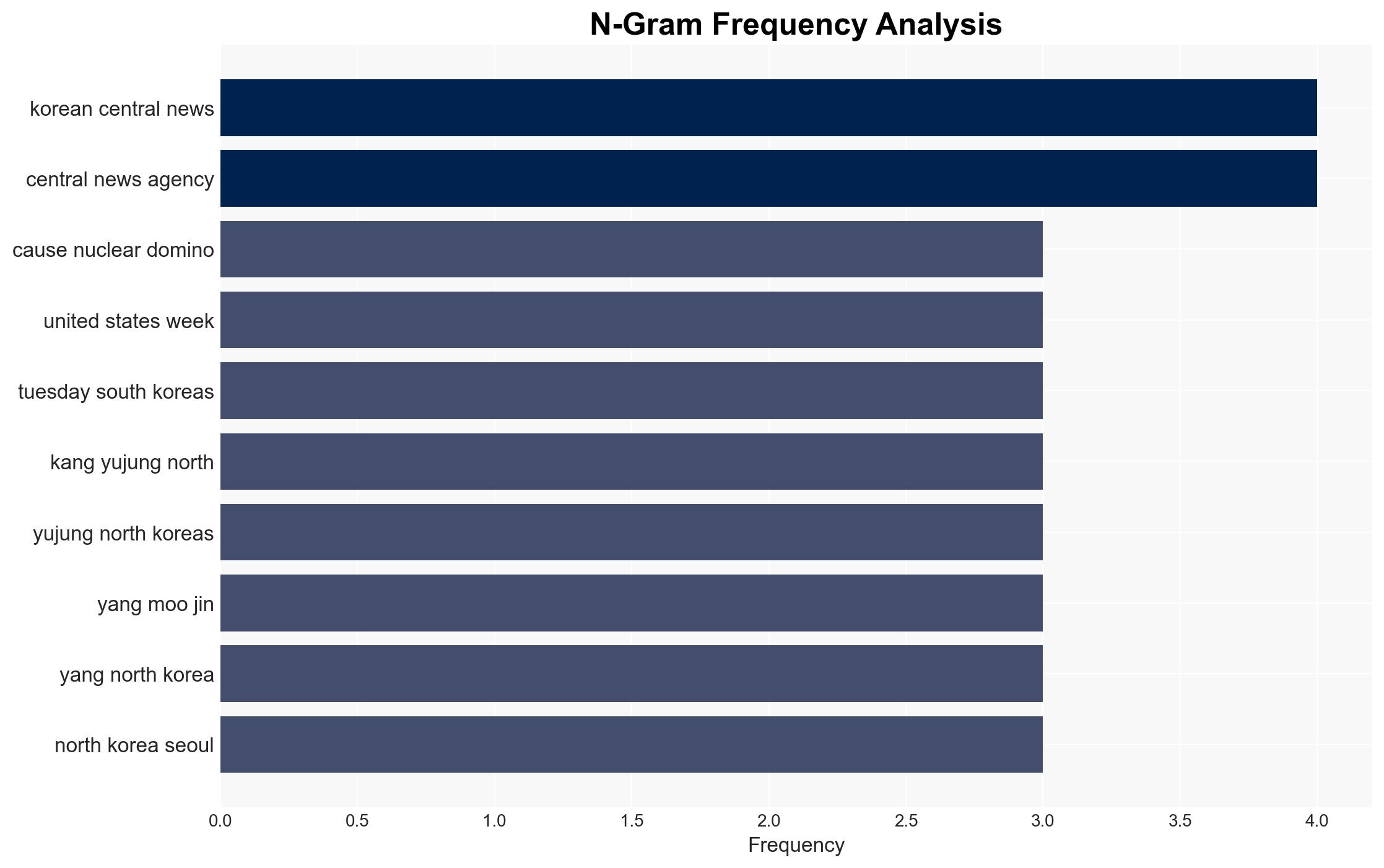North Korea says Seoul-US submarine deal to trigger ‘nuclear domino’ effect – CNA
Published on: 2025-11-18
AI-powered OSINT brief from verified open sources. Automated NLP signal extraction with human verification. See our Methodology and Why WorldWideWatchers.
Intelligence Report:
1. BLUF (Bottom Line Up Front)
The strategic judgment is that North Korea’s denunciation of the Seoul-US submarine deal is primarily a strategic posturing to deter regional military enhancements and to leverage diplomatic negotiations. The most supported hypothesis is that North Korea is using this rhetoric to justify its own military advancements and to influence regional stakeholders, particularly China. Confidence level: Moderate. Recommended action: Increase diplomatic engagement with regional allies to mitigate escalation and enhance intelligence-sharing mechanisms.
2. Competing Hypotheses
Hypothesis 1: North Korea’s response is a genuine concern over regional nuclear proliferation, fearing that South Korea’s acquisition of nuclear-powered submarines could lead to an arms race and destabilize the region.
Hypothesis 2: North Korea’s statement is a strategic maneuver to justify its own military advancements and to gain leverage in future negotiations with South Korea and the United States.
The evidence suggests that Hypothesis 2 is more likely. North Korea has historically used aggressive rhetoric to justify its military programs and to influence diplomatic negotiations. The timing of the statement, coinciding with South Korea’s proposal for military talks, indicates a strategic motive rather than a genuine security concern.
3. Key Assumptions and Red Flags
Assumptions include the belief that North Korea’s statements are primarily rhetorical and not indicative of immediate military action. A red flag is the potential for North Korea to use this narrative to accelerate its own nuclear capabilities. Deception indicators include the use of state media to amplify threats without corresponding military movements.
4. Implications and Strategic Risks
The primary risk is the escalation of military tensions on the Korean Peninsula, which could lead to increased regional instability. There is also a risk of misinterpretation or miscalculation by involved parties, potentially leading to unintended confrontations. Economically, heightened tensions could affect regional markets and trade. Politically, this situation could strain US-China relations, given China’s cautionary stance on the deal.
5. Recommendations and Outlook
- Actionable steps: Enhance diplomatic channels with North Korea to clarify intentions and reduce tensions. Strengthen alliances with regional partners to present a unified front.
- Best scenario: Successful diplomatic engagement leads to resumed inter-Korean talks and a de-escalation of military rhetoric.
- Worst scenario: North Korea accelerates its nuclear program, leading to a regional arms race and increased military confrontations.
- Most-likely scenario: Continued rhetorical posturing by North Korea, with limited immediate military escalation but increased regional tensions.
6. Key Individuals and Entities
Lee Jae Myung – South Korean President; Kang Yu-jung – South Korean Presidential Spokesperson; Yang Moo-jin – Professor, University of North Korean Studies; Dai Bing – China’s Ambassador to Seoul.
7. Thematic Tags
Regional Focus, Regional Focus: Korean Peninsula, US-South Korea Relations, North Korea, China
Structured Analytic Techniques Applied
- Causal Layered Analysis (CLA): Analyze events across surface happenings, systems, worldviews, and myths.
- Cross-Impact Simulation: Model ripple effects across neighboring states, conflicts, or economic dependencies.
- Scenario Generation: Explore divergent futures under varying assumptions to identify plausible paths.
Explore more:
Regional Focus Briefs ·
Daily Summary ·
Support us
·





